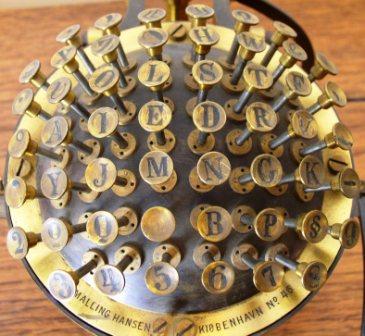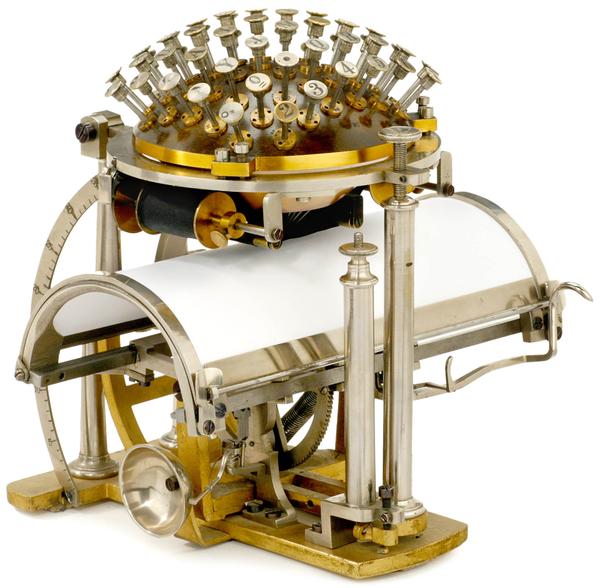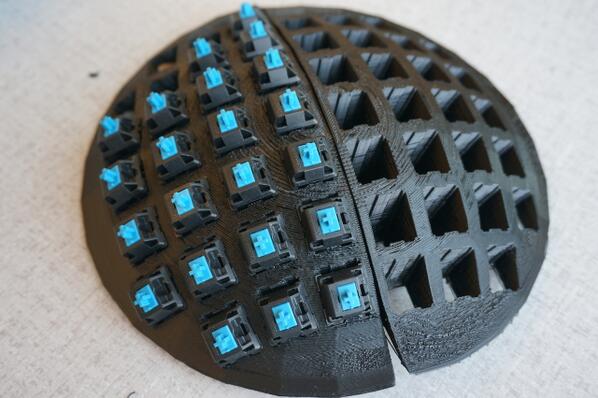Friedrich Nietzsche and his typewriter – a Malling-Hansen Writing Ball


From the webpage:
The most prominent owner of a writing ball was probably the German philosopher, Friedrich Nietzsche (1844-1900). In 1881, when he was almost blind, Nietzsche wanted to buy a typewriter to enable him to continue his writing, and from letters to his sister we know that he personally was in contact with “the inventor of the typewriter, Mr Malling-Hansen from Copenhagen”. He mentioned to his sister that he had received letters and also a typewritten postcard as an example.
Nietzsche received his writing ball in 1882. It was the newest model, the portable tall one with a colour ribbon, serial number 125, and several typescripts are known to have been written by him on this writing ball. We know that Nietzsche was also familiar with the newest Remington typewriter (model 2), but as he wanted to buy a portable typewriter, he chose to buy the Malling-Hansen writing ball, as this model was lightweight and easy to carry — one might say that it was the “laptop” of that time.
Unfortunately Nietzsche wasn’t totally satisfied with his purchase and never really mastered the use of the instrument. Until now, many people have tried to understand why Nietzsche did not make more use of it, and a number of theories have been suggested such as that it was an outdated and poor model, that it was possible to write only upper case letters, etc. Today we can say for certain that all this is only speculation without foundation.
The writing ball was a solidly constructed instrument, made by hand and equipped with all the features one would expect of a modern typewriter.
You can now read the details about the Nietzsche writing ball in a book, “Nietzches Schreibkigel”, by Dieter Eberwein, vice-president of the International Rasmus Malling-Hansen Society, published by “Typoscript Verlag”. In it, Eberwein tells the true story about Nietzche’s writing ball based upon thorough investigation and restoration of the damaged machine.
If you think of Nietzsche‘s typing ball as an interface, it is certainly different from the keyboards of today.
I am not sure I could re-learn the “home” position for my fingers but certainly would be willing to give it a try.
Not as far fetched as you might think, a typing ball. Matt Adereth posted this image of a prototype typing ball:

Where would you put the “nub” and “buttons” for a pointing device? Curious about the ergonomics. If anyone decides to make prototypes, put my name down as definitely interested.
I saw this earlier today in a tweet by Vincent Zimmer although I already aware of
Nietzsche’s typing ball.